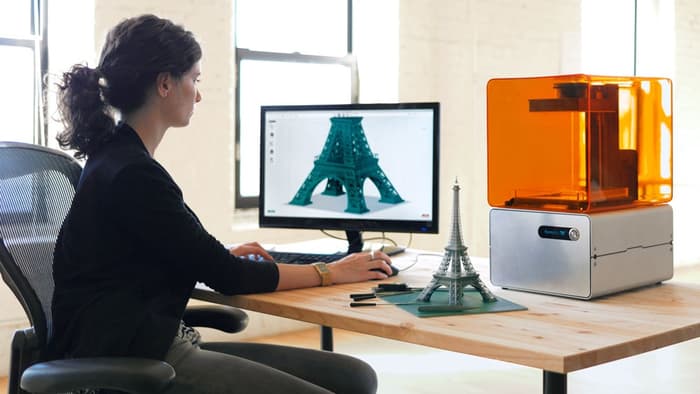5 Trends Reshaping the Building Information Modeling Process
Building Information Modeling (BIM) has begun to emerge as a more comprehensive alternative to 3D CAD modeling.


1) 3D Printing
Just a few years ago, 3D printing was a novelty especially for smaller AEC firms. Today, it’s an increasingly affordable opportunity to enhance your design and modeling with a physical representation of the digital concept.
Worldwide, Forbes expects the 3D printing market to grow to more than $12 billion by 2018. The same Forbes reported the single biggest industry use case to be prototyping, making it an ideal fit for the physical representation of a BIM project.
A study by the business advantage group agrees, seeing a 7% year-over-year increase in use of 3D printing technology within AEC. In all, most industry leaders point toward the two technologies increasingly merging, creating an undeniable advantage for companies engaged in BIM.
At its core, BIM is virtual. It allows for a comprehensive view of a building project, but has to be conceptualized digitally. Connecting 3D printing capabilities to that model allows companies to bring that virtual concept into reality, allowing contractors and other stakeholders to more easily use it as the basis for their work and presentations.
2) Prefabrication
A core benefit of Building Information Modeling, as mentioned above, is its comprehensive nature. In addition to providing architects, engineers, and construction professionals with the basic building materials needed to realize a concept, it can include a thermal model, structural calculations, and any other type of data and information that may shape the process of constructing and maintaining a given building or infrastructure project.
That comprehensive nature, in turn, aligns BIM perfectly with another construction trend: prefabrication. In the interest of cutting costs and improving the speed of construction, both individuals and organizations are increasingly turning toward modular, prefabricated alternatives. Around the world, the prefabricated housing market is growing rapidly, and the same holds true in the commercial space.
By using BIM systems, AEC companies can use prefabrication more effectively and successfully. Removing waste from processes has long been a guiding principle of lean organizations, and prefabrication optimized by BIM can accomplish just that. Its precise modeling capabilities allow companies to construct building parts without the necessary on-site verifications.
Above all, 3D modeling enables companies to better understand and optimize concepts before they go into production or construction. Automated processes help to identify inefficiencies, particularly thanks to the comprehensive nature of a BIM model. Parts of the projects can then be constructed dynamically and off-site, without having to be individually built at the site of the project itself.

3) Mobile Accessibility
Rising mobile internet usage is not a phenomenon isolated to AEC. But increasingly, it’s making its mark in this industry as well, requiring any digital solutions to be portable enough to satisfy its users.
A comprehensive BIM model on which architects, engineers, and construction professionals are all involved will need to be accessible from multiple locations. Ideally, that accessibility should be portable, helping to record and make adjustments even on the construction site or from a meeting room.
As Aconex outlines, some BIM software can now deliver that capability. Through cloud and mobile features, BIM models can more easily be shared across stakeholders, and accessed from any end point necessary. The result is increased user friendliness that in turn maximizes productivity and collaboration on the project.
In the future, this trend of mobile accessibility will only rise in importance. Architects won’t soon stop designing initial concepts on office computers, just as engineers will continue to compile crucial calculations from their desk. But BIM continues to matter beyond project completion, as it relates to maintenance and small updates. In accomplishing each goal, mobile accessibility is key.
4) Green Buildings
Any AEC professional knows about the continued and still-rising importance of green construction. Certifications like LEED offer a variety of benefits, from tax deductions to marketing opportunities, that leads companies of all industries to demand green buildings as part of their construction project.
Designing and building sustainably, of course, depends on a variety of factors. Increasingly Building Information Modeling is able to recognize these factors, and streamline the design and construction process in order to maximize its impact.
Through energy performance modeling, for example, architects and engineers can design a structure that optimizes the amount of heat and cold required to make a building livable and workable. Software like Autodesk now includes tools specifically designed to analyze a building’s energy performance, helping to increase its sustainability. BIM, in other words, is increasingly beneficial and vital to design and build green construction.
5) Government Regulations
Increasingly, governments around the world are beginning to recognize the potential and capabilities of BIM. As a result, they are beginning to explore it for public projects, in some cases even requiring BIM models for any construction and infrastructure project.
The U.S. Department of Veteran Affairs, for example, now requires contracted AEC companies to use BIM “as effectively and efficiently as possible,” while the General Services Administration has developed a guide for companies seeking to use BIM when submitting and working on RFPs.
Meanwhile, the United Kingdom now has a unified BIM standard for all construction projects connected to public funding. The same is not yet true in the U.S., but given the above benefits, it’s not difficult to foresee a future in which building information modeling is wrapped into RFPs for public projects.
At its core, BIM is in itself a major trend within the AEC industry. 2D models of concept visualizations and projects are becoming less desirable, and even 3D CAD modeling may not hold the comprehensive benefits that Building Information Modeling brings. As a result, projects as significant as major infrastructure improvements and as simple as existing building maintenance are taking advantage of BIM.
At the same time, the effectiveness of doing so can only be maximized if AEC professionals understand and leverage the above trends currently shaping the present and future of the concept. As 3D printing, mobile accessibility, and some of the other trends begin to shape the future of the concept, working with a company that can leverage the benefits of BIM to its fullest is vital.
Source: https://www.theengineeringdesign.com/5-trends-reshaping-building-information-modeling-process/












